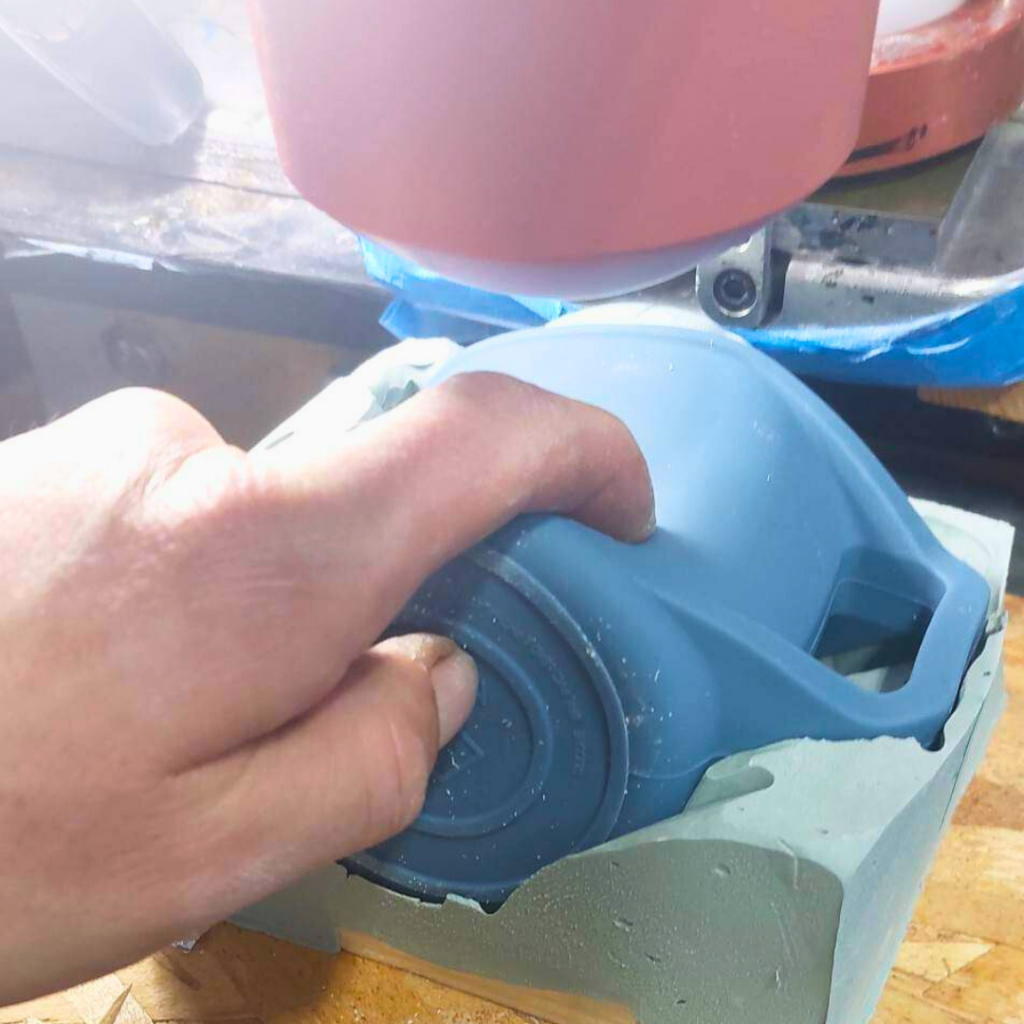A pad printing pad is one of the most critical pad printing supplies for the pad printing process. The pad transfers pad printing ink from a printing plate (cliché) to the product. The ink does not stick to the pad because it is made of silicone. Additionally, the silicone material makes it easy to transfer ink to the product (substrate). There are many sizes and shapes of pads. Also, it is possible to customize them for your specific application. Check out our silicone pads.
Our proprietary silicone material is designed to deliver the highest quality silicone pads. With this silicone material combined with our vast selection of molds, we can deliver almost any pad you can think of—small, medium, and large pads.


The pad printing process (tampography) is a process for printing high-quality images on 3-D or irregular objects. This printing process utilizes a machine. There are two types of pad printing machines: open ink well machines and closed ink cup machines. We will focus on closed (sealed) ink cup machines. Closed ink cup machines have an ink cup assembly (ink cup ceramic ring, O-ring, vent plug, and cup body), a plate, ink, and a silicone pad (tampon). It is the pad that transfers the image etched on the plate to the object. Selecting the wrong pad will result in skewed images, incomplete images, and possibly ink adhesion. Additionally, over time, the pads wear out. It is critical to note that and replace or rejuvenate pads as they age.
A silicone pad (tampon) is a critical consumable of the tampo printing process. These components are responsible for transferring an image from a printing plate to the object. To produce high-quality images, it is important to select the best pad for your specific application. In addition, it is equally important to keep pads in their best working condition. This involves both restoring them and making sure they are in their best working condition. Lastly, pad selection is crucial for image quality. When selecting a pad, it is important to consider the pad’s shape, size, hardness measured in durometer, surface finish, and material.

The shape of the pad printing pad is one of the most important factors to consider when selecting a pad for your application. This is important because it is the shape that determines how well the pad achieves its rolling action.
As previously discussed, when selecting the pad, it is important to make sure that it is 20% larger than the image. This is the ideal size when selecting a pad. Other factors that will influence the size of the pad include the machine and the pad’s hardness. Large pads will affect the machine’s ability to compress. Therefore, match the image with the correct pad size and machine.
Do you have more questions? Please visit our support hub for more details.

At Boston Industrial Solutions, Inc., we manufacture a proprietary silicone rubber material used in making silicone pads. Our material lasts twice as long and has a tougher tensile strength compared to any other silicone material on the market today.
A durometer measures the hardness of materials like rubber, plastic, and other non-metallic materials. We use a shore durometer to measure the hardness of a pad printing pad. There are three scales for measuring the durometer. These are Shore 00, Shore A, and Shore D. Shore 00 is the most common for measuring gels and silicone pads. Below is a shore harness for most applications.
Hardness | Description |
30–40 | Soft rubber pads |
50–60 | Medium soft |
60–70 | Hard |
70–80 | Medium hard |
80 + | Very hard |
Most applications use 60–70 durometer hard pad printing pads. For products that might break, such as glass, we recommend using 40–55 durometer soft rubber pads, while for rough or textured surfaces, use very hard pads (70D+).


Pads have a useful life. Proper care is required. This would enable you to get extended use out of them. Proper care for pads involves cleaning them between jobs and after printing. You should never leave ink to dry on the tampon for a long time.
At Boston Industrial Solutions, we manufacture a wide range of silicone pad printing pads for all types of machines. We have a very broad range of pad selections. We can duplicate any pad available in the world. Additionally, our pads are competitively priced, and we complement this with our legendary customer care.
Lastly, our silicone formulation delivers crisp, exceptional prints with extended life. Our pads not only last a long time, but they also break in quickly.

Payment Once you submit the order form, we will send you a link to make the payment.
Please accept the terms and conditions by Boston Industrial Solutions.
Your request has been submitted. Someone from the team will contact you shortly.